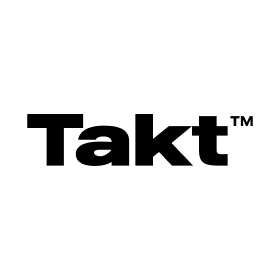
Master Case Studies to Attract More Clients: Quick Guide for Digital Agencies
It is not surprising that digital agency owners and new-age marketers constantly seek ways to demonstrate their value and win new clients. One of the most effective tools at your disposal is the case study.
As you already know, a case study is a type of review that goes beyond mere testimonials to provide a detailed account of the current customers’ experiences with your brand. Unlike old-school reviews, case studies explore the specific challenges clients face and the tailored solutions the agency provides.
And yes, the power of case studies is undeniable. According to a blog by Adobe, 89% of consumers read reviews before making a purchase decision, and 79% consider case study content as part of their buying process. This influence extends to the B2B sector, where 52% of buyers rank case studies as a crucial element in their evaluation process.
In a nutshell:
So, it is crystal clear that case studies build trust, highlight your expertise, and ultimately attract more clients.
In this quick guide, prepared especially for digital marketing agencies and marketing professionals, we will walk you through the process of creating powerful case studies that resonate with your target audience and drive business growth.
Why Are Case Studies So Important for Digital Agencies?
At that point, we have to mention a truth all the marketing ecosystem knows: For digital marketers and agencies, the importance of case studies cannot be overstated. How come? They provide a detailed narrative that not only highlights specific challenges and the tailored solutions provided but also demonstrates measurable results and customer satisfaction. This comprehensive storytelling builds credibility and trust, distinguishing successful marketers from their peers.
Need proof? According to the 12th Annual B2B Content Marketing report by the Content Marketing Institute, there is a significant trend among the most successful content marketers: their increased use of case studies. While 61% of all respondents employed case studies in their strategies, this figure jumped to 73% among the top-performing marketers.
This disparity suggests that case studies play a pivotal role in achieving superior marketing outcomes. So much so that it offers a more persuasive form of content that resonates deeply with potential clients.
The same report highlights that case studies are one of the content assets that produced the best results in 2023.
As such, by incorporating well-crafted case studies into their content strategy, digital agencies can significantly enhance their appeal, showcase their expertise, and drive client acquisition. And all of these make case studies an indispensable tool for helping you grow your digital agency.
What’s more about case studies?
It Highlights Real-World Challenges
As marketers already know, case studies begin by detailing the specific problems a client faces. This could range from declining website traffic and low conversion rates to ineffective social media strategies. By presenting these real-world challenges, case studies set the stage for illustrating how your digital marketing agency understands the main issues impacting a client’s business.
It Shows Measurable Results
Another reason that the best digital marketing agencies use case studies is to show measurable results in detail.
In addition to the challenges, the most critical component of a study is the results section. Using that section, you can showcase the tangible outcomes of your efforts, supported by data and metrics. These measurable outcomes present concrete evidence of your marketing agency’s problem-solving capabilities. By showing how your solutions lead to real, positive changes, you build credibility and demonstrate the value you can bring to potential clients.
It Illustrates Methodical Processes
Best part? This type of content is also great for detailing the processes and methodologies your digital marketing agency follows. This includes the research and analysis phase, strategy development, implementation, and ongoing optimization. By walking through each step, you not only highlight your agency’s diligence but also reassure potential clients of your systematic methods for meeting their unique marketing needs.
Step-by-Step Guide to Creating Impactful Case Studies
So, it’s time to break down the process into manageable steps, helping you create case studies that engage your audience while presenting your digital marketing agency’s value proposition.
Before jumping into the guide, let us remind you that a typical case study includes several key elements. First and foremost, an engaging headline captures attention and summarizes the success story. The case study then introduces the subject and customer, providing necessary background information and outlining the unique challenges faced. It details the solution provided, explaining how it was implemented to address the digital marketing clients’ needs.
The results section highlights improvements, supported by data and statistics to substantiate success claims. Finally, a strong call to action (CTA) encourages readers to engage with the vendor.
All of these are basics, of course. But what makes your case study impactful?
#1: Pay Attention to Formatting
There’s no need to say that for digital marketing agencies, it’s crucial to avoid creating blocks of text that are hard to read. Instead, use short sentences and paragraphs to maintain clarity. Break up your content with bullets, numbered lists, and eye-catching images to keep readers interested and make the information easier to understand.
Dividing your content into manageable chunks improves the user experience, increasing accessibility for your case study. It also guarantees that your target audience receives your message properly.
Take the DAN-member agency Fook Communications’ case study; head to the link here.
#2: Tell an Engaging Story
We all know that focusing on facts is a must while writing a case study. However, it does not mean you are simply presenting facts; instead, tell an engaging story while avoiding blocks of text that can overwhelm readers.
In other words, focus on creating a narrative that captures attention from the start. Use short sentences and paragraphs to maintain clarity, and use storytelling (especially while describing the problem). As you present your agency’s solution, weave in details highlighting your expertise and strategic approach.
Another DAN member, a well-known SaaS tool Vendasta, and Little Jack Marketing teamed up in the previous year and released the outcomes of the collaboration via a case study featuring a successful storytelling method. Check it out.
#3: Utilize Graphics
No need to explain, but… infographics, charts, and pictures are examples of graphics that help break up text and simplify complex information. They give readers a clearer picture of your accomplishments and help them remember them. And those kinds of elements work for case studies.
Additionally, including eye-catching photos helps highlight important ideas and give the case study life. For instance, before-and-after visuals can effectively demonstrate the improvements achieved through your agency’s efforts.
Graphics also contribute to the content’s variety, which keeps readers interested. When graphics are used effectively, they improve the professionalism and attention to detail of your agency, which makes your case study more powerful and convincing.
In addition to including the graphic in the case studies, we recommend you add these images related to your work to your social media posts, like another DAN member, Creative Brand Design, does:
#4: Include Quotes
You picked up the right formatting and utilized storytelling and graphics for your case study, but you need more social proof to strengthen your hand—then include quotes!
Including quotes from both your agency and your clients is a quite powerful way to add credibility and authenticity to the content. Since quotes provide personal insights, they highlight the human aspect of your success story.
Quotes also speak directly to the benefits they experienced and the positive impact of your services. So, these testimonials offer genuine endorsements that potential clients can relate to and trust.
Agency quotes, on the other hand, can provide expert commentary on the strategies and decisions that led to the successful outcome. They offer a behind-the-scenes look at your thought process and expertise.
Want to see yourself? Check it out.
#5: Regularly Update
Finally, regularly updating your case studies is crucial for maintaining their relevance & impact. Showcasing up-to-date success stories highlights the evolution of your digital marketing agency services and demonstrates your agency’s ongoing innovation. Clients are impressed by examples that reflect the latest trends and technology, showing your agency’s evolution.
Current case studies also highlight the long-term success and consistent value of your services. Fresh content improves SEO, making it easier for potential clients to find you online. Regular updates show how your digital marketing agency services continue to provide effective solutions to new challenges.
Bonus: How to Get Customers to do Case Studies
When you do a quick search on Google about case studies, you encounter the question, “How can I get customers to do case studies?” That’s not surprising when considering that getting customers to agree to participate can sometimes be challenging.
Here are some effective strategies to encourage your customers to do case studies:
- Explain the value in the first place: increasing brand visibility, showcasing success, providing marketing content, etc. At that point, you can share examples of past case studies and benefits for previous clients.
- Handle most of the work and provide a simple outline or questionnaire.
- Before the case study, offer discounts on future services, free consultations, and co-branded marketing opportunities.
- Select optimal moments and meet the clients after project completion or achievements. Or you can mention the idea of a case study during initial project discussions or in contracts.
- Address confidentiality concerns and assure clients that their information will be protected.
- Develop a case study template to guide the process and set expectations.






















